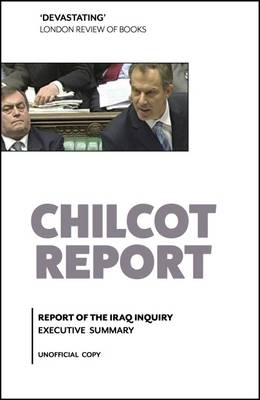17%OFF

Stock image for illustration purposes only - book cover, edition or condition may vary.
Chilcot Report (Report of the Iraq Inquiry): Executive Summary: Unofficial Copy 2016
Sir John Chilcot
€ 10.99
€ 9.08
FREE Delivery in Ireland
Description for Chilcot Report (Report of the Iraq Inquiry): Executive Summary: Unofficial Copy 2016
Paperback. Num Pages: 224 pages. BIC Classification: 1FBQ; HBJF1; HBLX; HBWS5; JWK. Category: (G) General (US: Trade). Dimension: 131 x 198 x 27. Weight in Grams: 162.
Product Details
Publisher
Canbury Press
Format
Paperback
Publication date
2017
Condition
New
Number of Pages
220
Place of Publication
, United Kingdom
ISBN
9780995497801
SKU
V9780995497801
Shipping Time
Usually ships in 5 to 9 working days
Ref
99-94
Reviews for Chilcot Report (Report of the Iraq Inquiry): Executive Summary: Unofficial Copy 2016
